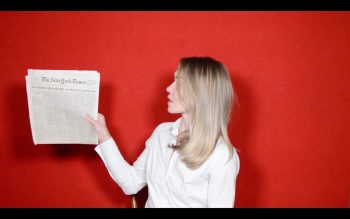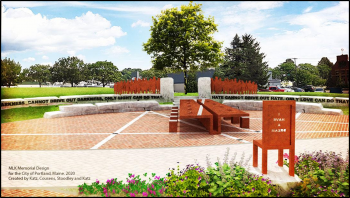The Charles Danforth Gallery presents a virtual exhibition of fresh works by UMA Art and Architecture Faculty
January 28 – February 19, 2021

The Art and Architecture faculty at the University of Maine at Augusta are holding a virtual exhibition organized by the Charles Danforth Gallery. Current works by UMA faculty across a range of media, from video to plaster, address a variety of contemporary issues. These works demonstrate the artistic vision and versatility of UMA’s dynamic faculty.
Taking part in the exhibition are the following faculty artists, and brief descriptions of their works in the exhibition:
Adam Antonio Montoya – An artist and Art lecturer, Montoya explores the oddities, subtleties, and grandeur of North America’s physical and interior geographies. Through layered abstractions of analog and digital image-making processes and drawing, his work explores concepts like mimesis, animism, and deep time.
Patricia Brace – Brace is a performance artist whose work addresses the relationship between intersectional feminism and politics through her use of dance, new media and installation. In her video work “An Incalculable Loss,” Brace read the 1,000 names of people killed by COVID-19 printed in the New York Times to mark 100,000 deaths in May of 2020. The video records around ten minutes of the three-hour performance.
Jere DeWaters – A photographer and recently retired UMA faculty member, DeWaters’ photographs capture bass lures handmade by his friend. “I wonder about our attractors, our desires, our shiny objects,” DeWaters wrote, “Do we by instinct take their bait? And is there a merciful God who releases us from the hook’s terrible grasp after a full examination?”
Bethany Engstrom – An artist and curator in addition to an Art lecturer, Engstrom’s work revolves around an interest in our considerations of life and the uncomfortably strange sensations that we experience within these areas. She seeks to push the ordinary and mundane further in order to approach the unknown and connect with others through shared encounters. “Breaking Bread” was made during an artist’s residency in late 2019. She molded and cast the bread and apples that were part of the residency’s daily routine in plaster. Engstrom writes, “When I returned home, I stored them away, and when the pandemic began, I brought them out to find mold had begun to grow [on the plaster]. It seemed that although I had tried to preserve the bread and apples, they continued to change, serving as a reminder of togetherness and hope for gathering again.”
Amy Hinkley – A practicing architect, Hinkley’s professional work evidences a commitment to sustainable construction methodologies and building systems, as well as larger issues of landscape, site and community. Of her paintings in the exhibition and their relationship to her practice of drawing, Hinkley wrote, “The two large paintings chosen for this exhibit are from a series of paintings that emerged as a result of this dialogue between drawing and painting, place and studio, mark and erasure, deliberation and accident, memory and observation.”
Robert Katz – Katz is a sculptor who has taught in the Art department at UMA for forty years. In the spring of 2019 the City of Portland, Maine announced a competition for a MLK Memorial to be situated along the Bayside Trail. Katz embraced this challenge and assembled a team that included an architect, landscape and acoustic designer, an educator, an historian and a student. Members of his team included graduates of UMA’s art and architecture programs. Together they created a design proposal entitled, The Welcome Table. A video included in the exhibition documents their process.
June Kellogg – Kellogg’s paintings evolved over the years from realism to abstraction and now to a combination of realism and abstraction. Kellogg wrote of her paintings, “My paintings are an expression of my reverence for nature. They express my conviction that all things are connected and that the earth must be honored and treated well so that future generations will survive and flourish on this planet. My working process is to combine the realism of landscape with abstract improvisation allowing both to coexist harmoniously.”
Carter Skemp – Skemp is a designer, builder, and Lecturer in the Architecture department. He wrote of his works in the exhibition, “These drawings are a kind of example of what happens when you try to transform from digital to reality. A representation of a single moment that is not really an intersection, but more of an interchange. To convert from digital to the real world, the pressures of reality must be accounted for. The ‘thing’ that first exists in the digital world, free of the constraints of reality, must shift, change, or adapt to become real.”
Eric Stark – Stark is an architect and educator by training and profession. He explained of his handmade paper baskets in the exhibition, “basketry is like architecture in that the viewer has first-hand experience with both a basket and a building. It is this familiarity with the art form that makes basketry (like architecture) approachable, and immediately creates the possibility of engaging the viewer with the work.”
To view the virtual exhibition, please visit: https://www.danforth.uma.edu/


